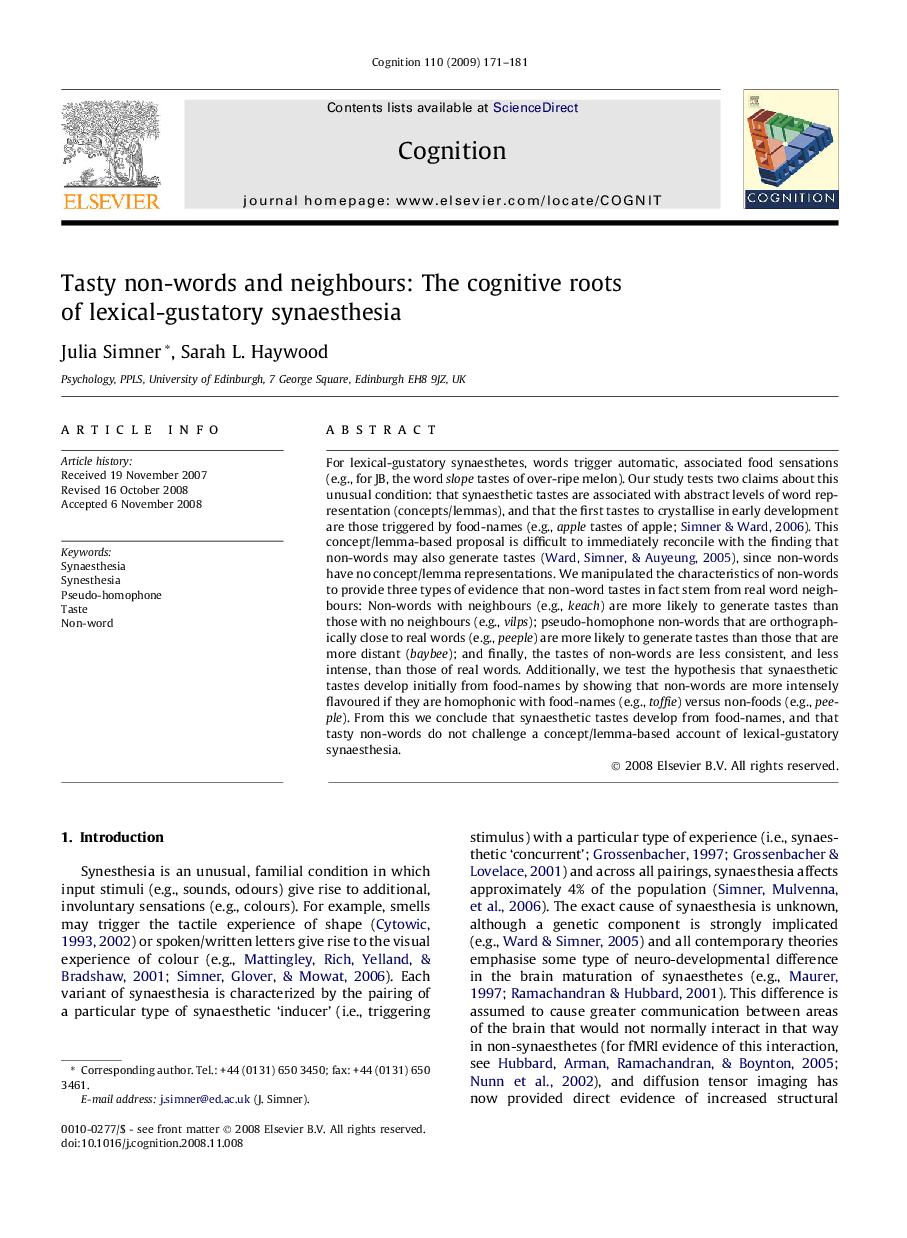| کد مقاله | کد نشریه | سال انتشار | مقاله انگلیسی | نسخه تمام متن |
|---|---|---|---|---|
| 927228 | 921955 | 2009 | 11 صفحه PDF | دانلود رایگان |

For lexical-gustatory synaesthetes, words trigger automatic, associated food sensations (e.g., for JB, the word slope tastes of over-ripe melon). Our study tests two claims about this unusual condition: that synaesthetic tastes are associated with abstract levels of word representation (concepts/lemmas), and that the first tastes to crystallise in early development are those triggered by food-names (e.g., apple tastes of apple; Simner & Ward, 2006). This concept/lemma-based proposal is difficult to immediately reconcile with the finding that non-words may also generate tastes (Ward, Simner, & Auyeung, 2005), since non-words have no concept/lemma representations. We manipulated the characteristics of non-words to provide three types of evidence that non-word tastes in fact stem from real word neighbours: Non-words with neighbours (e.g., keach) are more likely to generate tastes than those with no neighbours (e.g., vilps); pseudo-homophone non-words that are orthographically close to real words (e.g., peeple) are more likely to generate tastes than those that are more distant (baybee); and finally, the tastes of non-words are less consistent, and less intense, than those of real words. Additionally, we test the hypothesis that synaesthetic tastes develop initially from food-names by showing that non-words are more intensely flavoured if they are homophonic with food-names (e.g., toffie) versus non-foods (e.g., peeple). From this we conclude that synaesthetic tastes develop from food-names, and that tasty non-words do not challenge a concept/lemma-based account of lexical-gustatory synaesthesia.
Journal: Cognition - Volume 110, Issue 2, February 2009, Pages 171–181